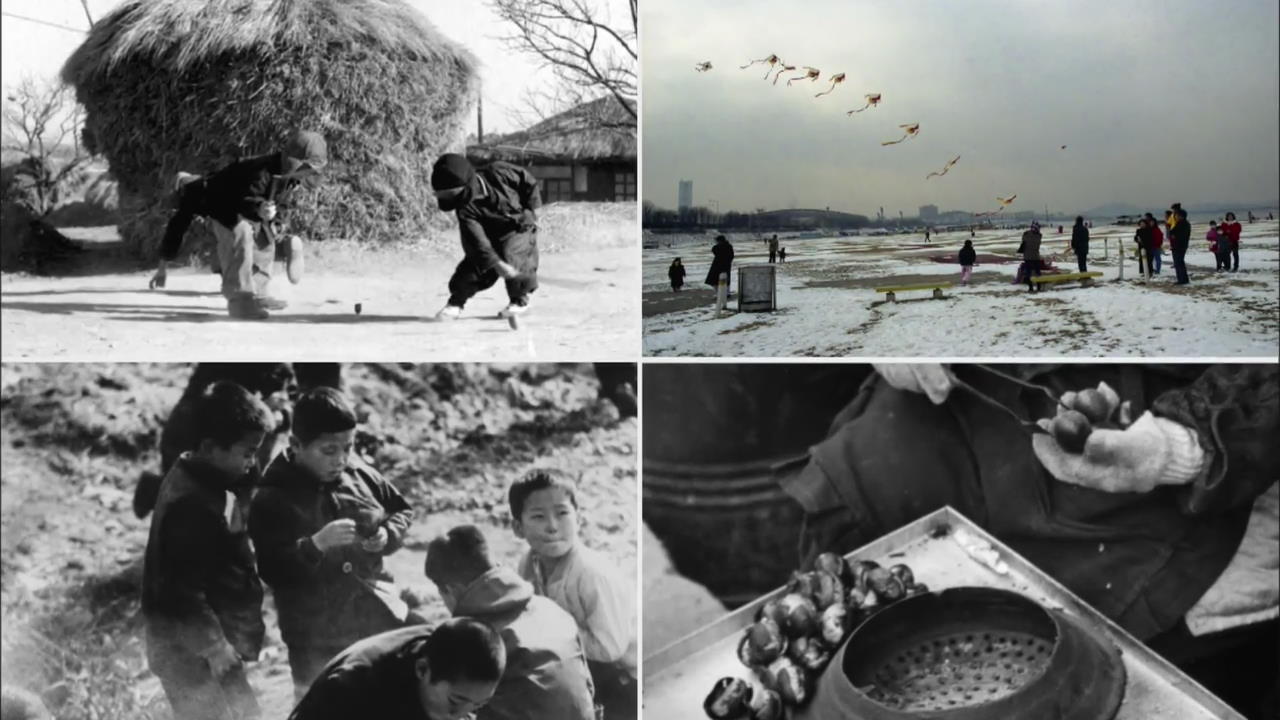Symbolism of Colors
입력 2017.01.17 (14:13)
수정 2017.01.17 (14:21)
읽어주기 기능은 크롬기반의
브라우저에서만 사용하실 수 있습니다.
[Anchor Lead]
Historically, different colors have symbolized different things with the passage of time. Here’s a look at how the times have changed the meanings of different colors in the life of Koreans.
[Pkg]
During the 2002 Korea-Japan World Cup, waves of fans dressed in red and holding red cheering accessories were a medium and symbol of unity. Since then, the color red has become a symbol of victory and passion in current times.
[Soundbite] Kim Eun-kyung(Gyeonggi-do Province Resident) : "Things like enthusiasm and the fiery passion seen at the recent candlelight rallies come to mind."
Traditionally, red was a color used to ward off evil spirits or to symbolize authority. But after the Korean War, red was recognized as a symbol of communism, and therefore was given a negative image. Black is another color whose meaning has changed dramatically with the changing times. During the Joseon period, black symbolized formality and dignity. But Japanese colonial rulers used the color as a means of oppression and control in order to destroy the identity of the Korean people, who favored white clothes. With a ban imposed on white clothing, people were forced to wear black or grey. Blue is the color most preferred by Korean people since ancient times, and yellow signifies nobility and sacredness. Relics demonstrating the meanings of colors in the lives of Korean people have been gathered at an exhibition.
[Soundbite] Hwang Kyung-sun(Researcher, National Folk Museum) : "There are points that were valued in each era. History and colors have progressed together."
Various colorful expressions in the Korean language can be seen through a summary on the usage of color-related adjectives on the wall of the exhibition space.
Historically, different colors have symbolized different things with the passage of time. Here’s a look at how the times have changed the meanings of different colors in the life of Koreans.
[Pkg]
During the 2002 Korea-Japan World Cup, waves of fans dressed in red and holding red cheering accessories were a medium and symbol of unity. Since then, the color red has become a symbol of victory and passion in current times.
[Soundbite] Kim Eun-kyung(Gyeonggi-do Province Resident) : "Things like enthusiasm and the fiery passion seen at the recent candlelight rallies come to mind."
Traditionally, red was a color used to ward off evil spirits or to symbolize authority. But after the Korean War, red was recognized as a symbol of communism, and therefore was given a negative image. Black is another color whose meaning has changed dramatically with the changing times. During the Joseon period, black symbolized formality and dignity. But Japanese colonial rulers used the color as a means of oppression and control in order to destroy the identity of the Korean people, who favored white clothes. With a ban imposed on white clothing, people were forced to wear black or grey. Blue is the color most preferred by Korean people since ancient times, and yellow signifies nobility and sacredness. Relics demonstrating the meanings of colors in the lives of Korean people have been gathered at an exhibition.
[Soundbite] Hwang Kyung-sun(Researcher, National Folk Museum) : "There are points that were valued in each era. History and colors have progressed together."
Various colorful expressions in the Korean language can be seen through a summary on the usage of color-related adjectives on the wall of the exhibition space.
■ 제보하기
▷ 카카오톡 : 'KBS제보' 검색, 채널 추가
▷ 전화 : 02-781-1234, 4444
▷ 이메일 : kbs1234@kbs.co.kr
▷ 유튜브, 네이버, 카카오에서도 KBS뉴스를 구독해주세요!
- Symbolism of Colors
-
- 입력 2017-01-17 14:14:36
- 수정2017-01-17 14:21:13

[Anchor Lead]
Historically, different colors have symbolized different things with the passage of time. Here’s a look at how the times have changed the meanings of different colors in the life of Koreans.
[Pkg]
During the 2002 Korea-Japan World Cup, waves of fans dressed in red and holding red cheering accessories were a medium and symbol of unity. Since then, the color red has become a symbol of victory and passion in current times.
[Soundbite] Kim Eun-kyung(Gyeonggi-do Province Resident) : "Things like enthusiasm and the fiery passion seen at the recent candlelight rallies come to mind."
Traditionally, red was a color used to ward off evil spirits or to symbolize authority. But after the Korean War, red was recognized as a symbol of communism, and therefore was given a negative image. Black is another color whose meaning has changed dramatically with the changing times. During the Joseon period, black symbolized formality and dignity. But Japanese colonial rulers used the color as a means of oppression and control in order to destroy the identity of the Korean people, who favored white clothes. With a ban imposed on white clothing, people were forced to wear black or grey. Blue is the color most preferred by Korean people since ancient times, and yellow signifies nobility and sacredness. Relics demonstrating the meanings of colors in the lives of Korean people have been gathered at an exhibition.
[Soundbite] Hwang Kyung-sun(Researcher, National Folk Museum) : "There are points that were valued in each era. History and colors have progressed together."
Various colorful expressions in the Korean language can be seen through a summary on the usage of color-related adjectives on the wall of the exhibition space.
Historically, different colors have symbolized different things with the passage of time. Here’s a look at how the times have changed the meanings of different colors in the life of Koreans.
[Pkg]
During the 2002 Korea-Japan World Cup, waves of fans dressed in red and holding red cheering accessories were a medium and symbol of unity. Since then, the color red has become a symbol of victory and passion in current times.
[Soundbite] Kim Eun-kyung(Gyeonggi-do Province Resident) : "Things like enthusiasm and the fiery passion seen at the recent candlelight rallies come to mind."
Traditionally, red was a color used to ward off evil spirits or to symbolize authority. But after the Korean War, red was recognized as a symbol of communism, and therefore was given a negative image. Black is another color whose meaning has changed dramatically with the changing times. During the Joseon period, black symbolized formality and dignity. But Japanese colonial rulers used the color as a means of oppression and control in order to destroy the identity of the Korean people, who favored white clothes. With a ban imposed on white clothing, people were forced to wear black or grey. Blue is the color most preferred by Korean people since ancient times, and yellow signifies nobility and sacredness. Relics demonstrating the meanings of colors in the lives of Korean people have been gathered at an exhibition.
[Soundbite] Hwang Kyung-sun(Researcher, National Folk Museum) : "There are points that were valued in each era. History and colors have progressed together."
Various colorful expressions in the Korean language can be seen through a summary on the usage of color-related adjectives on the wall of the exhibition space.
이 기사가 좋으셨다면
-
좋아요
0
-
응원해요
0
-
후속 원해요
0

















이 기사에 대한 의견을 남겨주세요.